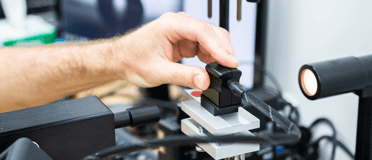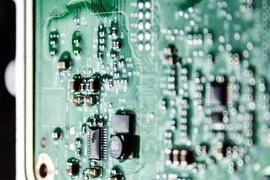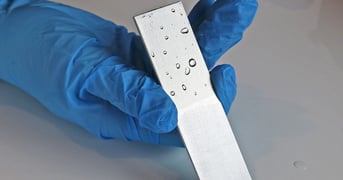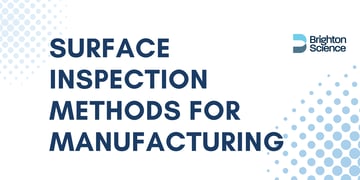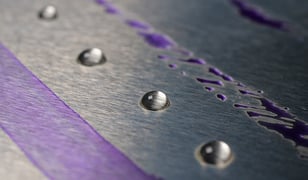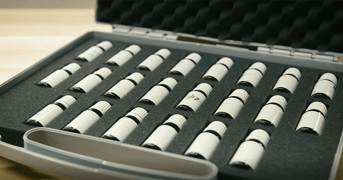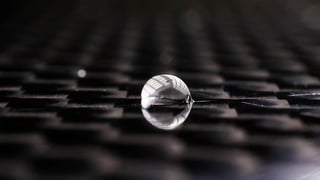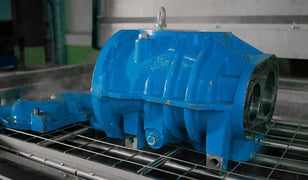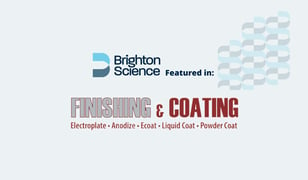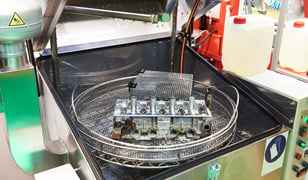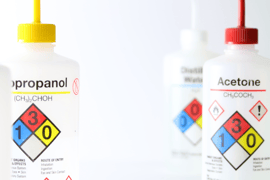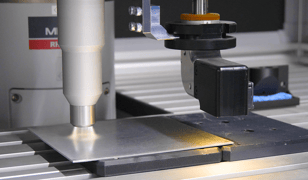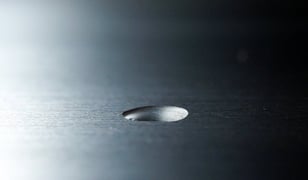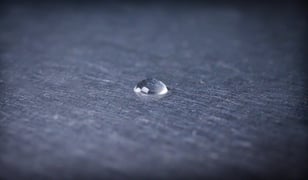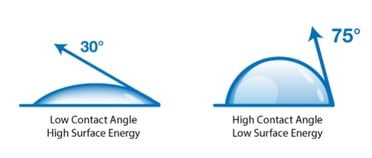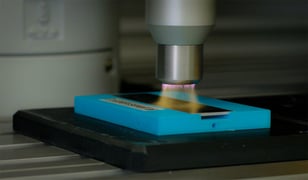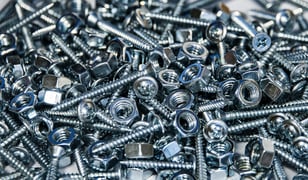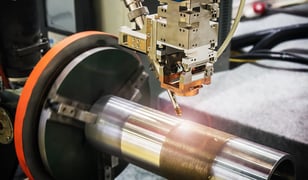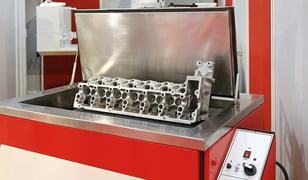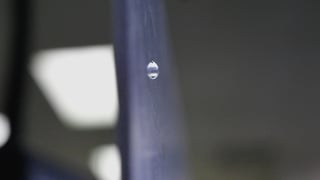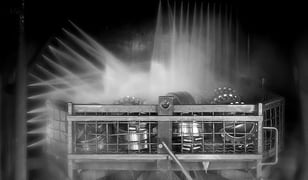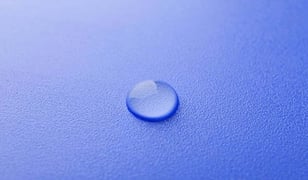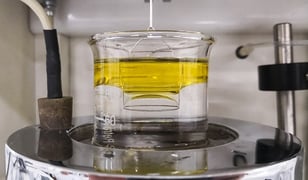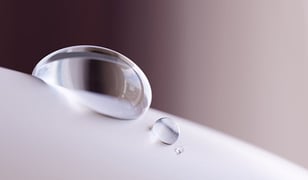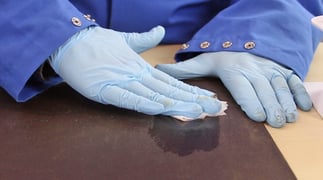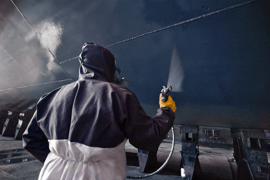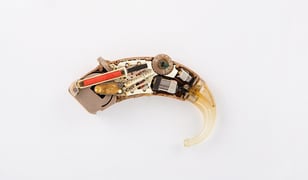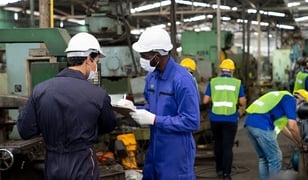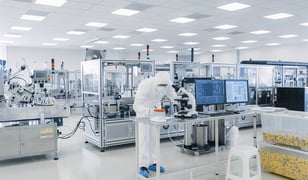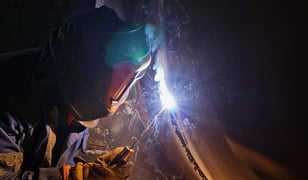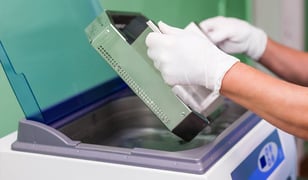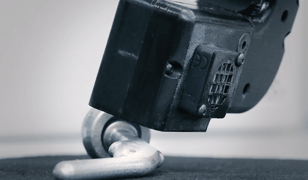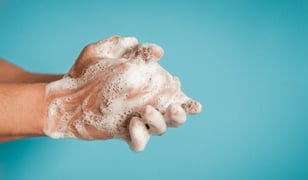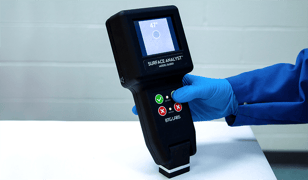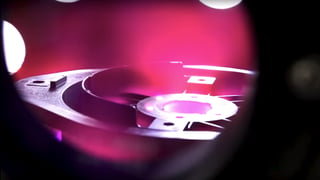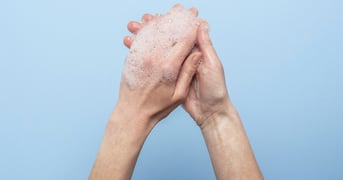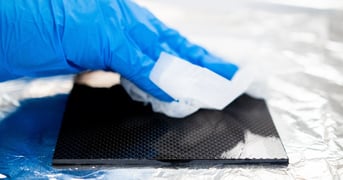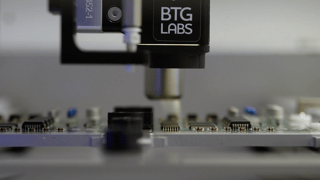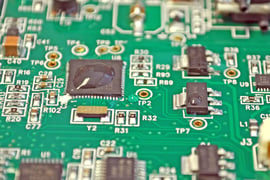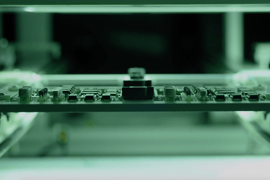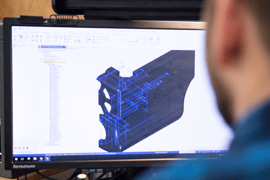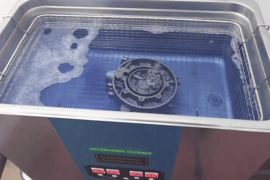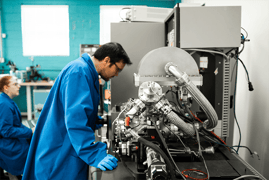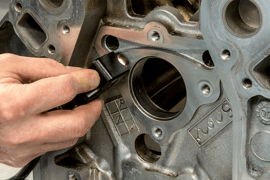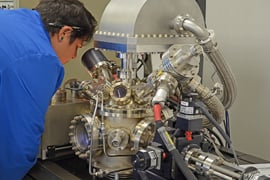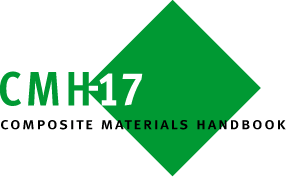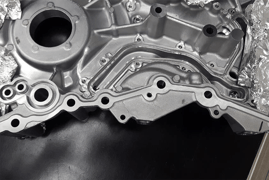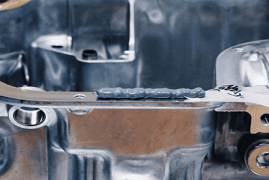Speed vs. Quality: How Manufacturing Sectors Balance Risk, Cost, and Innovation
In every manufacturing environment, there's one constant tension: how to move fast without breaking things. Whether you're building airplanes, cars, consumer electronics, or medical devices, the same tradeoff exists: production speed versus product quality.
Read
Topics:
Posts by Topic
Enhancing Automotive Manufacturing with Surface Intelligence
The Evolution of Automotive Materials and Their Challenges The automotive industry is constantly evolving, with manufacturers adopting advanced materials to improve strength, fuel efficiency, and durability while reducing weight and cost. Traditional materials like steel and iron are increasingly...
Read
Topics:
Environmental Silicone: Detection, Control, and Impact on Adhesion in Manufacturing
Silicone contamination is a huge problem in many painting and bonding applications. It’s impossible to see, hard to remove, and it creeps in unseen like a ghost. Where the harm it can cause is recognized, businesses go to great lengths to clean surfaces and exclude potential sources of...
Read
Topics:
The High Cost of Molding Defects: Protect Your Bottom Line
Imagine crafting a colossal mold, a behemoth capable of shaping fiberglass and composites into the intricate contours of a plane wing, the sleek hull of a boat, or even the entire body of a bus. It's a monumental task, requiring months of meticulous preparation and planning. As you gear up to start...
Read
Topics:
Gaining a Competitive Edge: The Power of Surface Analysis with Brighton Science
Every manufacturer that bonds, coats, paints, seals, or cleans needs objective surface measurement technology. It's the key to compressing lead times, reducing waste, and improving product consistency. Brighton Science has a versatile suite of solutions for surface analysis based on water contact...
Read
Topics:
Navigating the Solvent Switch: A Sustainable Future for Parts Cleaning
Manufacturers who use solvent-based industrial parts cleaning processes must find alternative methods. Solvent-based cleaning processes use chemicals that emit or release Volatile Organic Compounds (VOCs). These are coming under increased scrutiny due to their harmful effects on health and the...
Read
Topics:
Contact Angle Goniometer 101: A Guide to Successfully Measuring Contact Angle
Have you wondered why some paints or coatings adhere effortlessly while others leave blisters or bubbles? The answer lies in wettability, the intricate dance between a liquid and a surface governed by a powerful principle known as contact angle. And measuring this microscopic tango? That's where...
Read
Topics:
4 Common Factors that Impact Conformal Coating Adhesion
The widespread use of electronics in all manufacturing sectors has presented distinct difficulties. Manufacturers are responsible for safeguarding these electronic devices in harsh conditions that render electronics susceptible to even the slightest traces of moisture, particles, and environmental ...
Read
Topics:
The Water Break Test as a Surface Measurement Gauge
The water break test is a common way for manufacturers to test the surface cleanliness of metal surfaces. Compared to other legacy cleanliness tests, it is relatively simple to perform. However, the results rely almost entirely on the subjective eye of the person performing the test. Hydrophobic...
Read
Topics:
Surface Inspection 101: A Visual Guide to the Surface Analyst, Water Break Tests, and Dyne Ink
In the manufacturing industry, it is crucial to meet certain surface preparation requirements in order to ensure the safety and reliability of products. Various tests have been developed to determine if these requirements are being met and if the cleaning process has been effective enough to...
Read
Topics:
Demystifying Dyne Levels: A Comprehensive Guide
The evaluation of material surfaces in terms of quality has long relied on dyne testing. Despite their drawbacks, such as subjectivity, imprecision, damage to surfaces, and safety risks for users, dyne tests have remained popular among manufacturers due to their wide availability and affordability....
Read
Topics:
Discover the Top Alternative to Dyne Testing That Gets Results
Dyne solutions have been the most common method of quality-checking material surface cleanliness for decades. Their ubiquity and low cost have led them to be heavily relied upon by manufacturers even though they are imprecise, destructive to surfaces, and harmful to the user. The science behind...
Read
Topics:
Surface Energy Measurement is the Key to Process Control and High Performance
When manufacturing companies take adhesion seriously, they can significantly improve their ability to achieve their business goals. The key is to take a strategic look at adhesion processes early in product development.
Read
Topics:
How to Fix Common Causes of Adhesion Problems
Manufacturers often have a large blind spot regarding the causes of adhesion problems. This blind spot makes it impossible to solve these problems and generates frustration and loss rather than productivity and adhesion success. Taking the blinders off and taking on adhesion failure at its...
Read
Topics:
Guess the Contact Angle: IPA Wiped Composite Material
This 'Guess the Contact Angle' video is the first of our next series of videos focusing on how contact angle changes when a composite surface is cleaned or treated in various ways. The contact angle featured in this demo is formed by a water droplet deposited using the handheld Surface Analyst on...
Read
Topics:
The Best Way to Qualify a Wash Method for Your Manufacturing Process
Parts washers are heavy-duty, hardworking machines that have become irreplaceable staples in automotive andmachined part manufacturing processes. As manufacturing processes have become more sophisticated, the industries using parts washers have expanded to includenot only industrial metals and...
Read
Topics:
Surface Analyst Diagnoses Critical Cleaning Issue of Defense Weaponry Components
Brighton Science's Surface Analyst was featured in a Finishing & Coating article where Hubbard-Hall used the handheld technology to diagnose a $1 million dollar problem for a manufacturer that extrudes aluminum tubes as part of two individual missile systems: an armor piercing air to surface...
Read
Topics:
Why You Should Rethink Your Manufacturing Cleaning Process
In manufacturing, a final assembly is only as reliable as its constituent parts, the bonding or joining method used to hold them together, or the coating method used for corrosion protection and/or the final aesthetic touch. In order to guarantee the strength and successful performance of a...
Read
Topics:
Why You Should Implement a Surface Cleanliness Specification Using Contact Angle
When cleaning invisible contaminants from a surface, you may ask yourself, "How do I know when the surface is clean, or how clean, is clean enough?" These are common questions that product development teams ask when developing new products that require surfaces to be thoroughly cleaned in order to...
Read
Topics:
Guess the Contact Angle: Plasma Treated Aluminum
So far in our Guess the Contact Angle Series, we have brought you three videos demonstrating how contact angle changes depending on the state of the material surface: Contact angle measurement on a piece of aged, 'as is' aluminum Contact angle measurement on aluminum after cleaning it with an IPA...
Read
Topics:
Why Automotive Glass Bonding Recalls Should be a Thing of the Past
Automotive glass is a technological marvel. Despite its clarity, much of how it's manufactured is unseen by the average driver. Silica compounds, tempering, and lamination all combine to create one of the most critical components of today’s motor vehicles. Unfortunately, though, things periodically...
Read
Topics:
Guess the Contact Angle: Abraded Aluminum
So far, in our Guess the Contact Angle Series, we have brought you two videos: the first one shows the Surface Analyst taking a contact angle measurement on a piece of aged, 'as is' aluminum. The second video asks you to guess the contact angle after we took the same piece of aluminum but cleaned...
Read
Topics:
Meet Brighton Science's Chief Scientist, Giles Dillingham
A Deep History in Materials Science Founder and Chief Scientist of Brighton Science, Dr. Giles Dillingham's fascination with the connections between the invisible (the molecular structure of the world around us) and the perceivable (the properties and behavior of materials and objects) stems from a...
Read
Topics:
Guess the Contact Angle: IPA Wiped Aluminum
As part of the Guess the Contact Angle series, we have brought you a new video that highlights best practices when cleaning material surfaces with IPA wipes and we will ask you to "guess" the contact angle measurement after the surface has been cleaned. The contact angle featured in this demo is...
Read
Topics:
Can Contact Angle Quantitatively Measure Total Surface Energy?
In an article published in the Journal of Adhesion Science and Technology, "Water Contact Angle as a Quantitative Measure of Total Polyethylene Surface Energy" Materials Scientists from Brighton Science (formerly BTG Labs) explain the validity of water contact angle as a measurement for total ...
Read
Topics:
How Manufacturers Can Optimize the Effectiveness of Plasma Activation
In last week’s blog post, Using Plasma for Surface Cleaning and Activation, Rose Roberts, Ph.D., Brighton Science's (formerly BTG Labs) Senior Custom Applications and Materials Engineer, discussed how to use plasma for the dual purposes of cleaning critical surfaces and activating critical surfaces...
Read
Topics:
Using Plasma for Surface Cleaning and Activation
This blog post is the first of a two-part series focusing on plasma. With the help of Rose Roberts, Ph.D., Senior Custom Applications and Materials Engineer, we will review plasma basics and discuss how plasma can be used for both cleaning and surface activation. We will also touch upon the...
Read
Topics:
Surface Quality Measurements Enable Plating and Coating Chemistry Suppliers to Guarantee Quality to Their Customers
Automotive supply chains are complex. Nearly 78 million vehicles were manufactured in 2020. Each vehicle may have upwards of 30,000 individual parts. Automotive original equipment manufacturers (OEMs) need to manage billions of parts annually. If any of these parts fail, vehicle performance is...
Read
Topics:
3 Things You Need to Know to Create Strong, Reliable Bonds With Laser Cleaning
Manufacturers are always looking to create stronger, more durable, reliable, and lightweight products in the automotive and aerospace sectors. In this pursuit, they’ve often upgraded and swapped out material systems for metal alloys with lower density, better temperature tolerance, and corrosion...
Read
Topics:
Quantifying the Effectiveness of High Volume Metal Cleaning in Fresh and Aged Baths
In today’s video, we will show you how to quantify the surface quality of metals when using fresh and aged baths. We will demonstrate how Water Contact Angle (WCA) measurements can provide feedback in less than two seconds on the effectiveness of your cleaning process and will enable you to improve...
Read
Topics:
Guess the Contact Angle: Aged 'as is' Aluminum
In today’s blog post, we are going to have a bit of fun using video to learn more about contact angles. We will show you a contact angle and will ask you to “guess” the contact angle measurement. The contact angle featured in this demo is formed by a water droplet deposited on a piece of ‘as is’...
Read
Topics:
Why Knowing Water Contact Angle is Important for Successful Adhesive Performance
Adhesives are an integral part of modern manufacturing, but choosing the right adhesive is only one part of the equation. It’s well known that you won’t get a reliable bond with an adhesive if you just slap the adhesive onto your material without doing anything to prepare that surface. What ISN’T...
Read
Topics:
What are Surfactants and How Do They Impact Surface Tension?
In recent articles, we’ve discussed what surface tension and surface energy are. Manufacturers must acquaint themselves with these concepts because controlling surface quality through surface energy measurement of solid materials is the most predictive method of ensuring high-performance bonds and...
Read
Topics:
What is the Difference Between Surface Free Energy and Surface Energy?
When it comes down to it, this is another purely semantic question, much like the one we dealt with in another article comparing the terms “surface tension” and “surface energy.” Surface-free energy is free energy in a particular space - the surfaces of materials. Free energy, in its most...
Read
Topics:
How to Measure Surface Tension
The attractive force of the molecules present at the surface of a liquid towards each other is called the surface tension of that liquid. It may seem like a little thing (and in terms of mass, it doesn’t really get much smaller than the top few molecular layers that make up the surface of a liquid...
Read
Topics:
What is the Difference Between Surface Tension and Surface Energy
Using adhesives in manufacturing is becoming increasingly common for building everything from massive machines to everyday tech devices. But companies' reliance on the science of adhesion to make sure their products work perfectly and look marvelous didn’t start there. In the centuries since the...
Read
Topics:
10 Most Common Surface Quality Mistakes by Manufacturers
Manufacturers are constantly fighting against adhesion problems. Surfaces not sticking and adhesives not working is the daily reality facing manufacturers looking to make high-quality, reliable products. The daunting nature of the task of eliminating adhesion failure seems insurmountable and...
Read
Topics:
Topcoat to Primer Surface Reliability for Aircraft Painting
Adhesion problems don’t have a preference when it comes to the kind of damage they cause. Whether the end result is structural or cosmetic, adhesion-related failure headaches for manufacturers abound. One of the most crucial aesthetic operations for aircraft OEMs is the topcoat of paint, although...
Read
Topics:
Surface Quality in Aircraft Sealing and Bonding for Repairs
When an aircraft is manufactured, every single portion of the plane or jet is designed to be able to be serviced and repaired for the next 20-30 years. Aircraft manufacturing OEMs are building aircraft with the expectation that extensive repairs will have to be done later down the road. This is an...
Read
Topics:
How Surface Sensitive Measurements Help Medical Device Manufacturers Avoid Regulatory Bottlenecks
The pathway to zero defect manufacturing through the implementation of quality control procedures is found right there in the name. Quality control requires the control of variables to ensure quality outcomes. But it’s the former that is beguiling to quality engineers.
Read
Topics:
Manufacturing Best Practices for Business Continuity Plans
The manufacturing industry has undergone unprecedented challenges in recent years, necessitating a fundamental re-evaluation of business continuity strategies. While economic downturns have historically presented obstacles, the complexities of today’s globalized and interconnected business...
Read
Topics:
What Medical Device Manufacturers Need From Surface Cleanliness Testing
Quality tests during medical device production need to check a lot of boxes for manufacturers. Testing must increase confidence in product reliability in order to be worthwhile to manufacturers. What’s more, that confidence needs to be measurable and reportable because companies cannot tolerate...
Read
Topics:
How to Get a Stronger Weld Through Cleaning
Even though we look around us and see plastic everywhere, in every shape and imaginable application, metals are still a more commonly used raw material in machined products. Metals are the legacy material of choice due to their strength and relative ease of bonding. However, advances in polymers...
Read
Topics:
Controlling Parts Washing Methods for Medical Components
Cleanliness is next to production standardization requirements for medical device manufacturers (as the old saying goes). Devices built to be inserted within the human body understandably need to meet the highest cleanliness standards. Companies in this industry have already known what many of us...
Read
Topics:
Single vs Multi-fluid Contact Angle Techniques Part 1: Surface energy and the attractions between substances
This is part one of a two-part series explaining the finer points of Brighton Science's approach to helping companies build reliability into their cleaning and adhesion processes through consultation and implementation of novel inspection equipment. These two articles are based on this technical...
Read
Topics:
Will New Hand Washing Practices Cause Problems for Manufacturing?
Like many industries during the COVID-19 crisis, manufacturing has had to make big changes, including scaling back its workforce, enforcing new and intensified hygiene standards, and taking a closer look at workplace cleanliness. Looking ahead to the permanent adjustments we’re all making, it’s...
Read
Topics:
Proposed ASTM Standard Will Ease the Pain of Manufacturers
An exciting development is taking place to make surface quality and cleanliness inspection technology more available to all manufacturers. We have collaborated with ASTM International and other stakeholders to craft a revision to establish a standard use of handheld goniometers in production...
Read
Topics:
How to Protect Overmolded Connectors for Medical Devices
Protective coverings are part and parcel of our lives these days. For industries reliant upon electronic components and connectors, protective coverings in the form of polymeric over-molding encapsulation need to remain sealed and impervious to the environment.
Read
Topics:
How to Get the Most Out of Your Vacuum Plasma Treatment
Vacuum plasma is the treatment method of record for many manufacturers. Not only because it is a legacy technology proven useful over many, many decades but because it can be particularly effective at creating chemically reactive surfaces of various geometries that need to be bonded, coated,...
Read
Topics:
Covid-19: Biological vs. Chemical Contamination in Manufacturing
Lately, the whole world has seen variations of the same conversation. Whether the discussion centers on N95 masks, toilet paper, hand sanitizer, disinfecting wipes, or what movies to watch while maintaining a safe social distance, the underlying concern is about cleanliness.
Read
Topics:
Cleaning Strategies for Great Adhesion
Cleanliness in manufacturing gains avid devotees all the time. Once the importance of cleanliness is grasped, it’s nearly impossible to think about manufacturing processes without considering the pervasive impact cleanliness has on every aspect and feature of the process.
Read
Topics:
Plasma Treatment for Complete and Reliable Cleaning with Richard Burke
At IPC APEX 2020 in San Diego, we wanted to explore the ways that electronics manufacturers, who encapsulate their circuit boards with a conformal coating, are cleaning their boards. What are the benefits to their current processes, and what are some things manufacturers could learn to make their...
Read
Topics:
History of Cleaning for Ideal Electronics Manufacturing with Mike Konrad
At IPC APEX 2020 in San Diego, we got the chance to sit down and chat with Mike Konrad from Aqueous Technologies and the Reliability Matters podcast, a show about the reliability of circuit assemblies.
Read
Topics:
Why Surface Cleanliness is Crucial for Electronic PCBs
Defining “clean” is actually more complicated than it sounds. Cleanliness can be in the eye of the beholder (I mean, we all had a college roommate who swore they were tidy, but let’s be honest…), and it can also be calculated and precisely managed to the nth degree. In regard to PCB cleanliness for
Read
Topics:
Is Roughness as Important as Surface Cleanliness to Adhesion?
When manufacturing engineers discuss material surfaces, they usually focus on their physical attributes, such as surface topography or morphology or, more simply, surface roughness. Preparing material surfaces for assembly, coating, painting, or adhesive bonding typically includes steps that...
Read
Topics:
Best-practice Surface Preparation Processes for New Products
New Product Development is an essential component to the successful growth of companies that always challenge themselves to improve and innovate. Getting this design stage right is pivotal in that it sets in motion everything the product will be and how well it will perform.
Read
Topics:
How to Ensure a Manufacturing Surface is Clean Enough for Adhesion
Cleanliness and adhesion go hand-in-hand. If you’re looking for an adhesion process to be successful, you are also absolutely interested in cleaning the materials involved in the application. To get the most out of your cleaning operations, it’s imperative to know three things: What does clean...
Read
Topics:
Can a Surface Science Lab Ensure Adhesion in Manufacturing?
Manufacturers utilize research and design laboratories all the time. To scale new products up to the production line, years of toiling in testing labs are done to ensure that everything goes off without a hitch once production starts.
Read
Topics:
Optimizing your Metal Performance with the Surface Analyst
Manufacturers who work with metal and are concerned with metal performance are all too familiar with the obstacles that come along with coating, painting, bonding, printing, or sealing it. While the uses of metal in manufacturing are countless and exist in numerous industries, the common...
Read
Topics:
Brighton Science's Exceptional Lab: Experts in Advanced Materials and Processes
Brighton Science Lab Capabilities The history of Brighton Science (formerly BTG Labs) is rooted in adhesion research. Originally a development lab, Brighton Science specialized in plasma polymerized coatings. The engineers worked with coatings containing corrosion-resistant and anti-microbial...
Read
Topics:
CMH-17 Composite Materials Handbook: Validating Surface Preparation
Ongoing Advancements in the Field of Composite Materials Brighton Science (formerly BTG Labs) maintains an important connection to CMH-17, the Composite Materials Handbook. Brighton Science's special connection began in 2004 when Giles Dillingham, Founder and Chief Scientist, read that CMH-17...
Read
Topics:
Contact Angle Analysis: Sealing Surface of Aluminum Castings
Surface Quality Requirements of Aluminum Castings Automotive manufacturers widely utilize aluminum castings as the most successful way to create aluminum parts. However, this process can involve inorganic contaminants on the surface, which interfere with potential bonding, sealing, or coating....
Read
Topics:
Automotive Applications Series: Ensuring Success for Formed-In-Place Gasket (FIPG) Applications
Controlling Surface Condition in FIPG Application Increasingly, FIPG processes are replacing traditional gaskets for a variety of automotive applications, such as air filters, oil filters, door panels, and external engine parts. The advantages include cheaper material cost, higher throughput...
Read
Topics:








